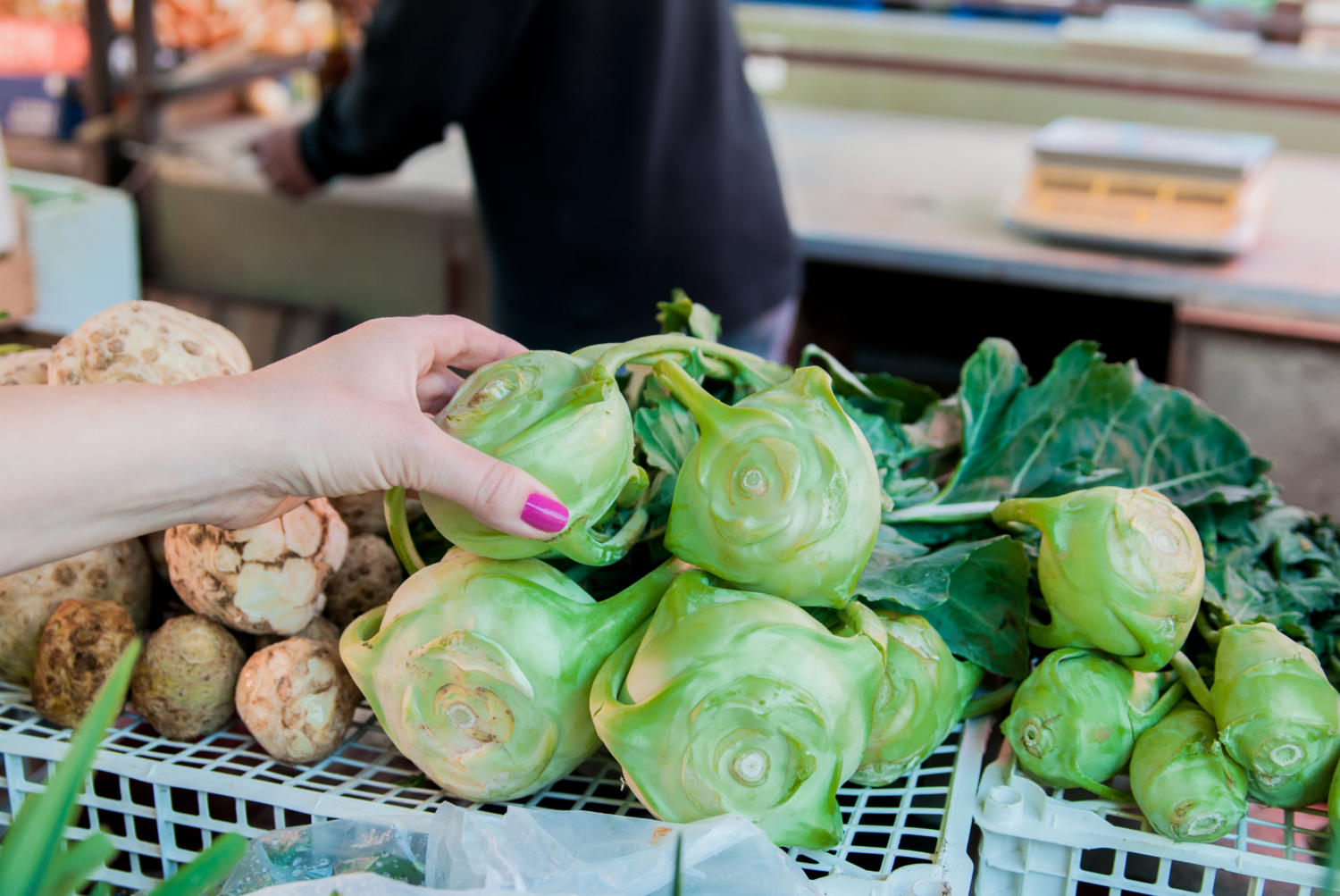
Kohlrabi is one of those vegetables that have never really caught on in this country. Widely grown and eaten elsewhere, especially in German-speaking countries (kohlrabi literally translates as ‘cabbage turnip’ in the Swiss-German dialect), it doesn’t even have an English name. In case you’re not familiar with it, kohlrabi is a rounded globe or bulb, sometimes flattened, sometimes more conical, that grows above the ground on a short stalk with cabbage type leaves sprouting from the sides and top. It comes in two colours, pale green or, more strikingly, purple. Peeled, the inner flesh is white. An odd vegetable,
it has the equally odd Latin name Brassica oleracea gongylodes. As this indicates, it’s a member of the brassica or cabbage family. It is neither a leaf crop like a cabbage nor a root crop like a turnip. The edible ‘globe’ is, infact, the swollen stem of the plant. In terms of taste, the nearest equivalent I can suggest is the crunchy heart of a hard white cabbage.
I like to dabble in unusual veg and usually have a few kohlrabi on the plot. In the past, I tended to grow the quicker maturing types intended for eating when no larger than tennis ball size. These can be sown at any time from mid-April through to mid-July, taking 12-16 weeks to mature. Generally, green-skinned varieties are best for spring and summer growing, while the slightly hardier purple-skinned types are better for harvesting into the winter. Seeds can either be sown directly in the ground or in trays/pots for planting out. Space plants at least ten centimetres apart. Kohlrabi is fairly robust but any pests that attack other cabbage family crops, for example, caterpillars or wood pigeons, may cause damage, especially to the tender leaves. The key to a quality crop is fast, unchecked growth. Be especially sure to water well in dry conditions.
Growing top-notch kohlrabi can be a challenge. In particular, if growth is slow or the plants are allowed to get too large, the globe will be unpalatable. With most varieties, anything bigger than a tennis ball is likely to be tough and woody. The tenderest kohlrabi are those harvested when not much bigger than a golf ball.
There are though, a few varieties of kohlrabi that can grow large without becoming fibrous. It is one of these, the green-skinned variety Superschmelz I now grow. A well-grown plant of this variety can easily exceed 2.5 kilos. Although some say it lacks flavour compared with smaller kohlrabi, not having to worry about it becoming inedible is reason enough to grow it. What’s more, it’ll stand well into the winter giving a longer, as well as a larger, harvest. To grow Superschmelz sow in late May or early June spacing plants 30 centimetres apart. Water, if dry, but otherwise no special attention is needed. There are other types that are said to remain tender if allowed to grow large including the purple-skinned Korist and Kossak but I’ve not grown either. For more information on these and growing kohlrabi generally, one of the best sources is ‘How to Grow Kohlrabi’ at https://www.gardenfocused.co.uk/vegetable/kohlrabi.php.











Add a comment